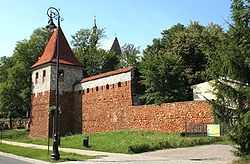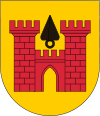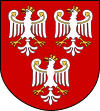Olkusz
| Olkusz | |||
|---|---|---|---|
|
Wall tower in Olkusz | |||
| |||
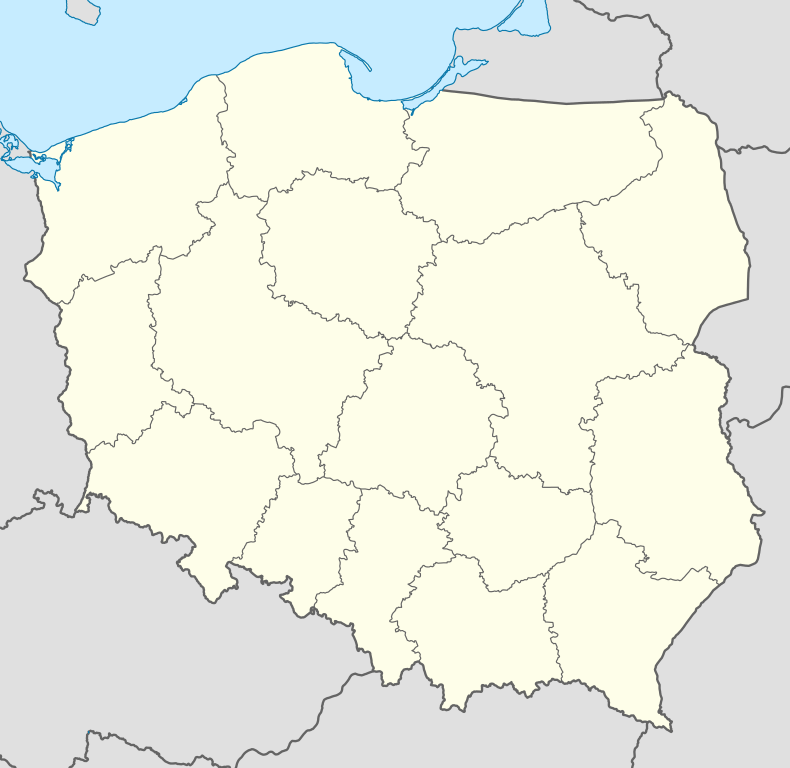 Olkusz | |||
| Coordinates: 50°17′N 19°34′E / 50.283°N 19.567°E | |||
| Country |
| ||
| Voivodeship | Lesser Poland | ||
| County | Olkusz County | ||
| Gmina | Gmina Olkusz | ||
| Government | |||
| • Mayor | Dariusz Rzepka | ||
| Area | |||
| • Total | 25.63 km2 (9.90 sq mi) | ||
| Population (2013) | |||
| • Total | 37,552 | ||
| • Density | 1,500/km2 (3,800/sq mi) | ||
| Time zone | CET (UTC+1) | ||
| • Summer (DST) | CEST (UTC+2) | ||
| Postal code | 32-300 | ||
| Car plates | KOL | ||
| Website | http://www.olkusz.eu | ||
Olkusz [ˈɔlkuʂ] (German: Ilkenau, Yiddish: עלקיש) is a town in south Poland with 37,696 inhabitants (2013). Situated in the Lesser Poland Voivodeship (since 1999), previously in Katowice Voivodeship (1975–1998), it is the capital of Olkusz County. From 1941 to 1945, the occupying Germans renamed the region to Ilkenau. Olkusz is called 'Silver Town" because of the large amount of silver that was found and mined here.
Surroundings
The city is on the Baba river, with a major road reaching it from Warsaw and Kraków, making it the central city of the vicinity. Tourists who wish to visit the nature and historical sites, start from here. Also, Olkusz is located on the main railroad line, which connects Upper Silesia and Zaglebie with Kielce.
According to the city website, a fable is mentioned that the city was formed by ancient Phoenicians who traveled here and found lead ore. The origin of the name is the Phoenician El-Khuds meaning to chisel.
A first written historical document from the year 1299 refers to the city of Olkusz, located in the Lesser Poland province of the Kingdom of Poland. The city was initially ruled by citizens of German descent, and the inhabitants were mostly wealthy, due to the lead mines. Silver was discovered too. Various wars crossed the path of this city, which was at its lowest at the end of the 17th century (see: The Deluge).
- Francesco Nullo, Italian and Polish patriot buried in Olkusz
- Antoni Kocjan, a national Polish war hero, pilot and engineer was born here.
Jewish Shoah
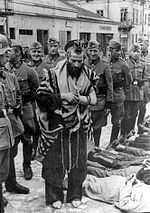
One of the most famous images of the holocaust is of Rabbi Moshe Hagerman the Dayan - Jewish municipal chief judge, dressed in his Talit and Teffilin and being abused by German soldiers. This image was later identified by people who survived the war and the incident as an image from the 'Bloody Wednesday of Olkusz', taken on July 31, 1940.
Most of the 4097 Jews listed by the Germans were eventually deported to the Auschwitz death camp complex and perished there in the Holocaust. About 250 Jews of Olkusz and its surroundings survived the war.
Religions
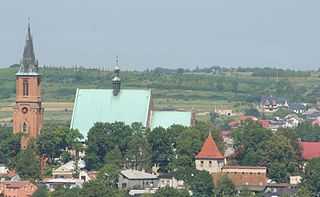
- Roman Catholicism 4 parishes:
- St Andrew's Basilica
- St Maximilian Maria Kolbe Church
- St Barbara Church
- Good Shepherd Church
- Jehovah's Witnesses (Kingdom Hall)[1]
- Pentecostalism
- Seventh-day Adventist Church
External links
| Wikimedia Commons has media related to Olkusz. |
- Most popular site about Olkusz
- Most popular Olkusz's Internet forum
- Olkusz city website, with contemporary images
- Nature around Olkusz
- Jewish Community in Olkusz on Virtual Shtetl
- Images of the Bloody Wednesday of Olkusz (Note that the name is Rabbi Hagerman and not Hangerman.)
- Images of deportation during the holocaust WWII
- A Polish war hero and famous glider engineer
- The full story of the famous Olkusz image identification (Hebrew)
- Olkusz -full screen gallery
International relations
Twin towns – Sister cities
Olkusz has a partnership with:
References
- ↑ Find a Meeting of Jehovah’s Witnesses (www.jw.org)
- ↑ "Gemellaggi e relazioni internazionali" (official website) (in Italian). Comune di Bergamo. 7 April 2006. Retrieved 2015-03-28.
| |||||||||||||||||||||
| ||||||||||||
